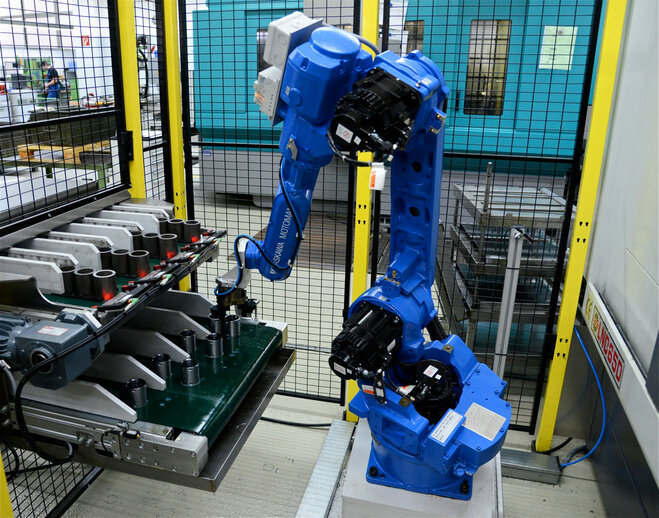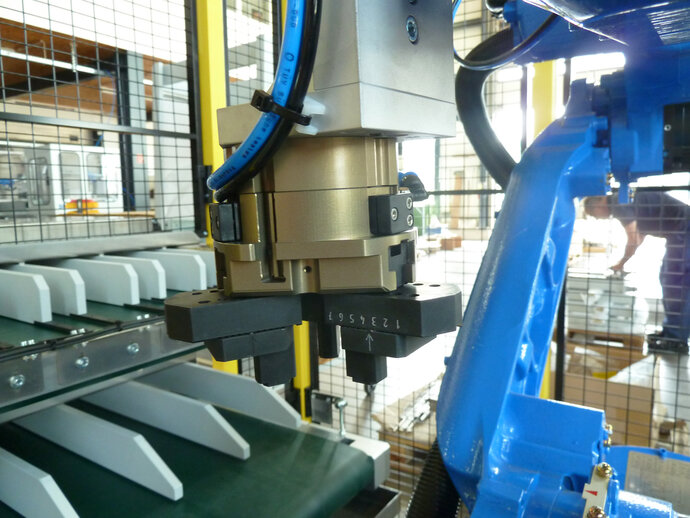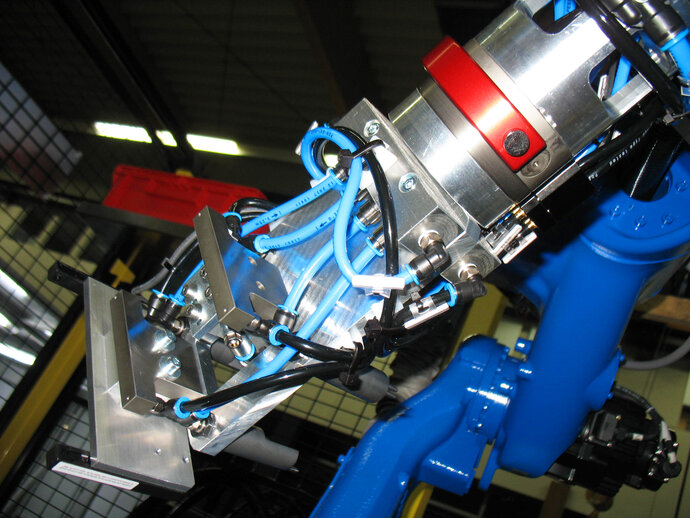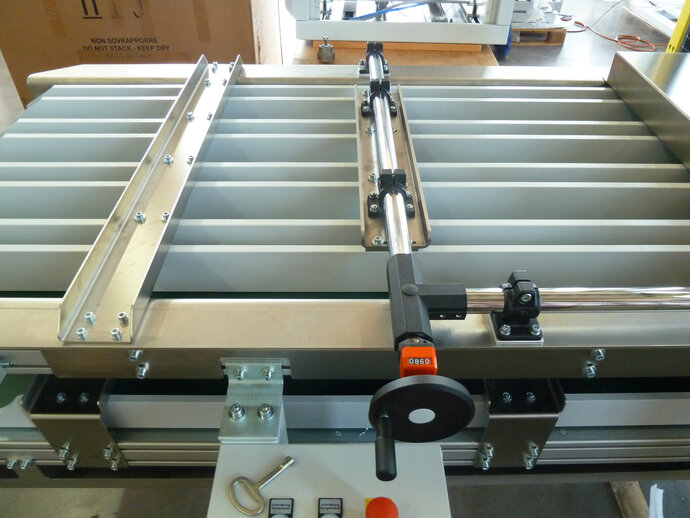More than 100 years committed to technical progress has made us the leading manufacturer in the fields of variable AC drives, servo drives, control technology and robotics.
Retooling of robot systems for alternating workpiece designs
Retooling processes on robot systems are necessary to handle changing workpiece and production versions. But each of these processes lead to unproductive times, entail a high error potential, and require additional knowledge and training.
Thus, good concepts for minimizing set-up times are, first of all, a business necessity to influence productivity as little as possible.
This article examines technical aspects and solutions to be considered for the development of efficient set-up concepts and has a look on the question where in an automation system component change must be addressed in order to achieve this goal.
- Applications
- Assembly
- Applications | Material Handling | Yaskawa
- Client
- EGS Automation GmbH
First, there is the actual robot sequence program. Once created for a new version, it only needs to be started when the version returns. Setting up a new component for the first time is easy thanks to the flexibility and free programmability of a robot. Depending on the robot, it may not even be necessary to intervene in the robot program. Then, only the parameters of a new workpiece are transferred, and the robot sequence program is designed accordingly.
For workpiece-guided processes (i. e. the workpiece is moved by the robot), it is the gripper tool which must be retooled. In the case of tool-guided processes, the workpiece holder in which the workpiece is provided is affected. There are various options and strategies for retooling the tool (often a gripper tool), depending on the frequency and budget of this process. The most cost-effective solution includes exchangeable or adjustable gripper jaws. In this case, these are designed as interchangeable parts that can be changed using screws or quick- release fasteners or can be adjusted in stages or continuously.
It is also possible to use a gripping tool driven by a servomotor that can move the jaws into different positions. In these cases, retooling is usually not necessary. However, well designed stepped jaws may also make it possible to dispense with retooling the gripping tool.
Another option is to change the entire tool. Gripper changing systems are used for this purpose, which are either operated manually by an operator or automatically. In automatic systems, the robot has all the change tools available in a magazine, a kind of gripper rack, and the robot itself fetches the right tool for the selected program.
Furthermore, the raw and finished part storage systems usually must be changed or loaded with the correct component version. If components are supplied and removed in workpiece carriers, these are independent of the component in the most cases. This means that they can be picked up the same way and only differ in terms of their inlays. In the case of bulk material supply, the conversion of the raw and finished part storage systems is more complex, unless this can be avoided by a clever choice of universal holders.
Of course, the actual machining or manufacturing process must also be converted. This e. g. means the tool or plastic injection molding machine itself. Before the actual production process can begin, a plausibility check is carried out via the electrical interface. This ensures that the robot sequence and all assembled parts of the machine match. When changing grippers, RFID chips are often mounted on the change parts to prevent the sequence program from starting if the gripper is not fitted correctly. Other common safety precautions include obtaining explicit confirmation from the operator before restarting the machine as well as starting the robot at a reduced speed.
The procedure for retrofitting is described in the system documentation, which must be supplied in the national language in accordance with the Machinery Directive. EGS Automation, an AMETEK brand, carries out a detailed operator briefing when handing over new systems, in which, among other things, the topic of converting the system is trained and practiced using the documentation. For larger systems, step-by-step operator guidance via the system screen is also possible.
In addition, good set-up concepts are characterized by a correspondingly durable and low- wear design of fastenings and fits, which ensure that the contact points still fit exactly and are not worn out even after numerous set-up processes.
Finally, ergonomics is an important issue. If the gripper exceeds a certain weight, a manual tool change only makes sense with aids, or you can opt for an automatic change by the robot. The accessibility of the positions to be set up should also be as ergonomic as possible.
An efficient set-up concept is then rounded off by subtleties such as clear marking of the change parts and the option of tool-free changeover or at least the option to dispense with special tools for the process.
EGS Automation GmbH
Raiffeisenstr. 2
78166 Donaueschingen
Germany
Phone +49 771 898606-0 | Telefax: +49 771 898606-99
egs.info@ametek.com | https://www.egsautomation.de/
Autor: Heiko Roehrig, EGS Automation GmbH
Your Contact for Public Relations:
Jan Maurath
jan.maurath@ametek.com
Pictures and Text: ©EGS Automation GmbH, all rights reserved























